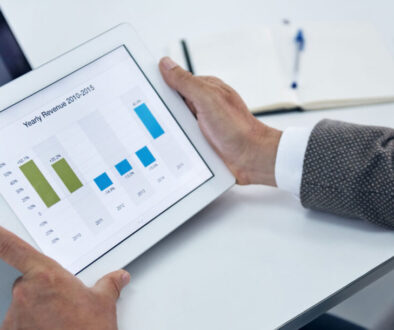Understanding Florida’s Commercial Real Estate Cycles
Understanding Florida’s Commercial Real Estate Cycles
Florida’s commercial real estate market is a dynamic environment influenced by various economic factors, seasonal trends, and local demographics. This comprehensive guide explores the cyclical nature of commercial real estate in Florida, examining key phases, trends, and what they mean for buyers and sellers. Understanding these cycles is crucial for making informed decisions, whether you’re looking to invest, sell, or lease commercial properties.
Introduction
The commercial real estate sector in Florida is a vibrant landscape filled with opportunities and challenges. As one of the fastest-growing states in the U.S., Florida attracts businesses and investors alike. However, like any market, it experiences cycles that can significantly impact property values, rental rates, and investment strategies. This blog post aims to illuminate the various stages of Florida’s commercial real estate cycles, arming readers with the knowledge to navigate this complex market effectively.
The Phases of Commercial Real Estate Cycles
- Expansion Phase: The initial stage of a real estate cycle is characterized by rising demand and increasing property values. Economic growth, job creation, and favorable interest rates contribute to this phase. For instance, Florida’s booming tourism sector often fuels demand for retail and hospitality spaces. As a result, new developments, renovations, and lease agreements proliferate.
- Peak Phase: As the cycle reaches its zenith, property values peak, and vacancy rates drop to their lowest levels. This is typically when investors are most active, and prices can be at their highest. In Florida, this phase has seen significant investment in luxury hotels and commercial centers, particularly in metropolitan areas like Miami and Orlando. However, the peak also signals an impending shift, as supply begins to outstrip demand.
- Contraction Phase: Following the peak, the market enters a contraction phase. This period is marked by a slowdown in demand, rising vacancy rates, and falling property values. Investors may find it more challenging to secure favorable financing, making it a critical time for businesses considering expansion or acquisition. For instance, Florida’s commercial spaces may see an oversupply, particularly in sectors like retail, as e-commerce continues to alter consumer behavior.
- Trough Phase: The trough represents the lowest point of the cycle, where property values and demand hit their lows. This phase can be especially tough for owners and investors. However, it also presents unique opportunities for savvy investors who can identify distressed properties and capitalize on potential recoveries. The post-recession era in Florida saw many investors purchasing undervalued properties in anticipation of the next expansion phase.
The Role of Economic Indicators
- Employment Rates: Employment rates are a key economic indicator that can influence commercial real estate cycles. In Florida, where tourism and related industries play a significant role, fluctuations in employment can directly affect demand for commercial properties. Higher employment rates often lead to increased consumer spending, benefiting retail and hospitality sectors.
- Interest Rates: Interest rates significantly impact real estate investment decisions. In periods of low interest rates, borrowing becomes more accessible, encouraging investment in commercial properties. Conversely, rising interest rates can lead to a cooling effect on the market, as financing becomes more expensive and developers may hesitate to initiate new projects.
- Population Growth: Florida’s steady population growth is another driving force behind its commercial real estate cycles. Increased population leads to higher demand for various commercial properties, from retail spaces to office buildings. This growth is particularly evident in metropolitan areas such as Tampa and Jacksonville.
- Consumer Confidence: Consumer confidence influences spending habits, thereby affecting retail and service-oriented businesses. When consumers feel optimistic about the economy, they are more likely to spend, which can boost demand for commercial spaces.
Impact of Seasonal Trends
- Tourism Trends: Florida’s economy heavily relies on tourism, particularly in coastal areas. Seasonal trends, such as winter months attracting snowbirds or summer vacations, can significantly affect commercial real estate. Properties in areas with high tourist traffic may see peak leasing activity during these times, while off-peak seasons could present opportunities for lower rental rates.
- Hurricanes and Natural Disasters: Florida’s vulnerability to hurricanes and natural disasters can lead to fluctuations in the commercial real estate market. The aftermath of a hurricane can create both challenges and opportunities—while some properties may suffer damage, others may be in high demand for reconstruction or temporary housing solutions.
- Holiday Seasons: The holiday season can also impact commercial real estate, particularly in retail. Increased foot traffic during the holidays can lead to higher sales for businesses, influencing demand for retail spaces. Understanding these seasonal trends can help investors make timely decisions regarding property acquisitions or leases.
Key Considerations for Investors
- Market Research: Thorough market research is essential for anyone looking to invest in Florida’s commercial real estate. Understanding local trends, demographics, and economic indicators can provide valuable insights into the market’s direction. Resources like the Florida Chamber of Commerce and local real estate associations can offer up-to-date information.
- Diversification: Investors should consider diversifying their portfolios to mitigate risks associated with market cycles. Balancing investments across different sectors—retail, office, industrial—can help stabilize returns during economic downturns.
- Professional Guidance: Navigating Florida’s commercial real estate market can be complex. Engaging professionals such as commercial real estate brokers, appraisers, and financial advisors can provide essential insights and guidance, ensuring that investors make informed decisions.
Future Outlook for Florida’s Commercial Real Estate Market
The future of Florida’s commercial real estate market remains bright, driven by several factors:
- Continued Population Growth: As more people relocate to Florida, demand for commercial properties is expected to rise, particularly in urban areas. Developers are likely to respond with new projects, fueling the expansion phase.
- Technological Advancements: The rise of technology in real estate, including virtual tours, online listings, and data analytics, is transforming the landscape. Investors who leverage these tools can gain a competitive edge.
- Sustainability Trends: There is an increasing focus on sustainable and environmentally friendly building practices. Properties that meet green building standards may attract higher demand, particularly from environmentally conscious tenants and investors.
- Infrastructure Developments: Ongoing investments in infrastructure, such as transportation and utilities, will further enhance Florida’s appeal as a commercial real estate destination. Improved accessibility can lead to higher property values and increased demand.
Conclusion
Understanding Florida’s commercial real estate cycles is crucial for anyone involved in the market, whether as an investor, buyer, or seller. By recognizing the phases of the cycle and the influencing economic indicators, stakeholders can make informed decisions that align with market trends. As Florida continues to grow and evolve, the opportunities within its commercial real estate sector are poised to flourish.
If you’re interested in exploring commercial real estate opportunities in Florida, whether buying, selling, or leasing, don’t hesitate to reach out. Contact us today to start your journey and make the most of the market’s potential!



